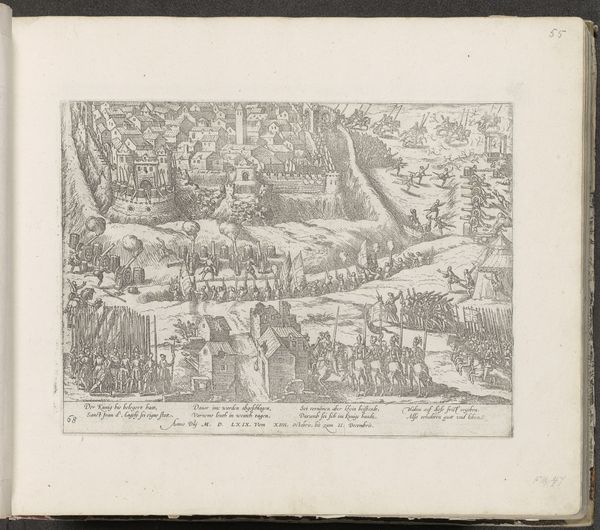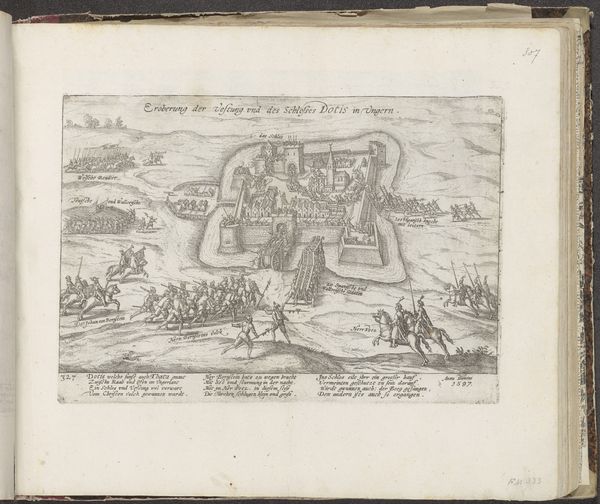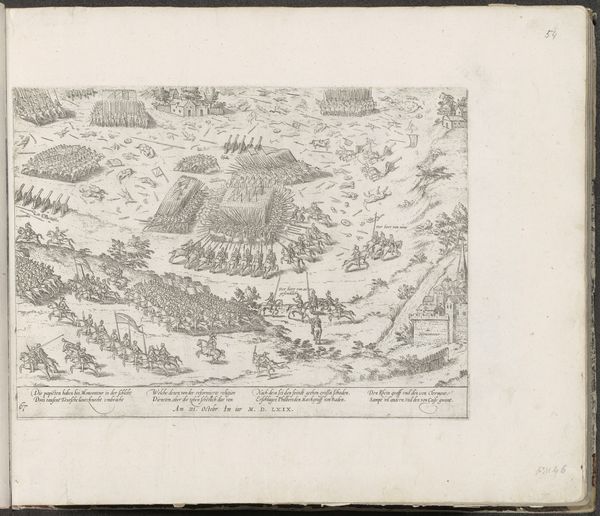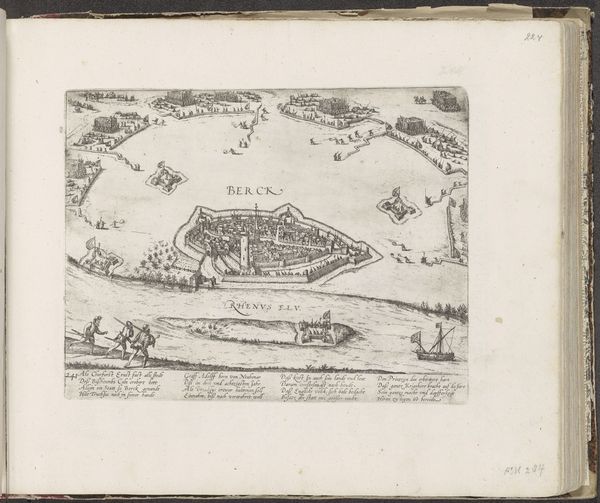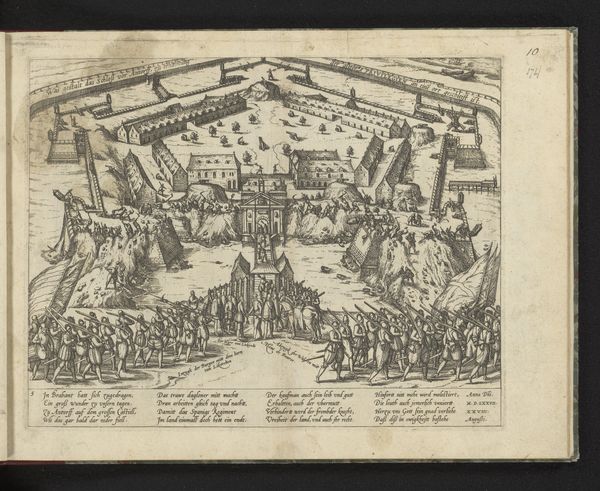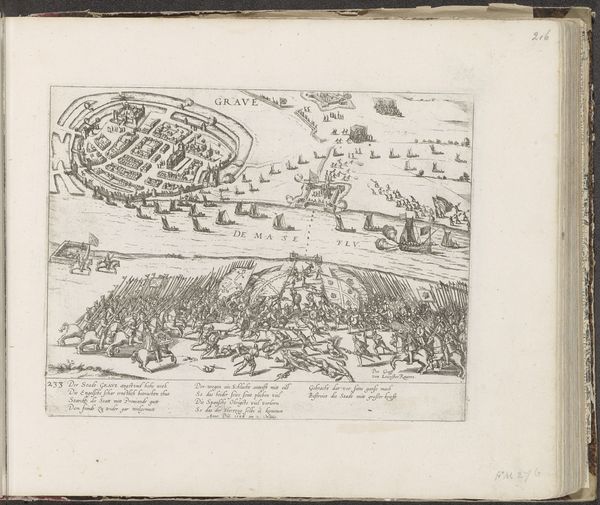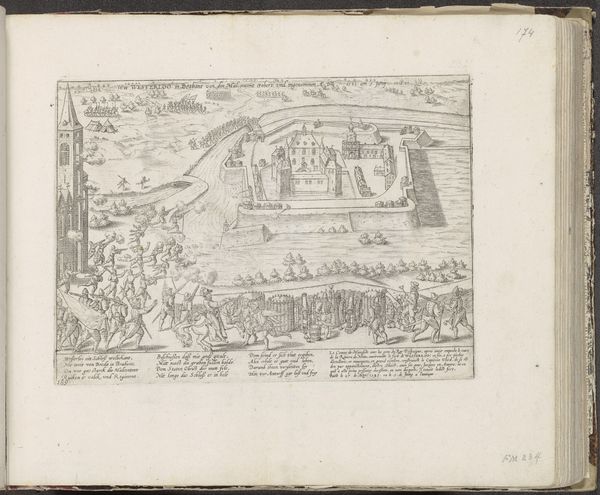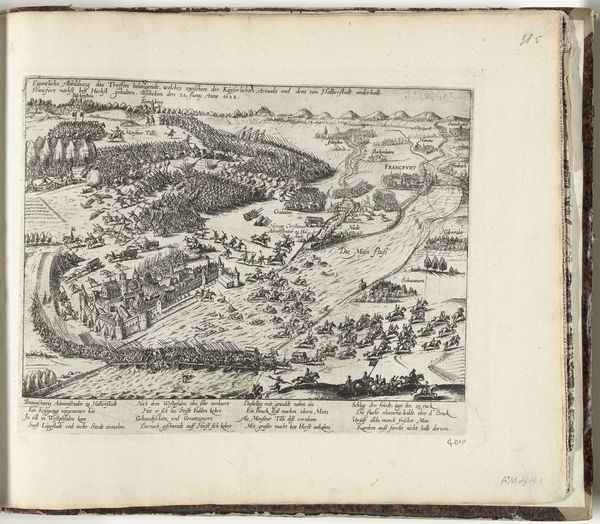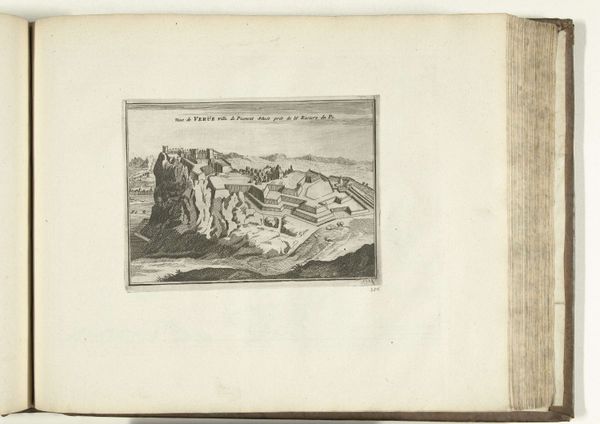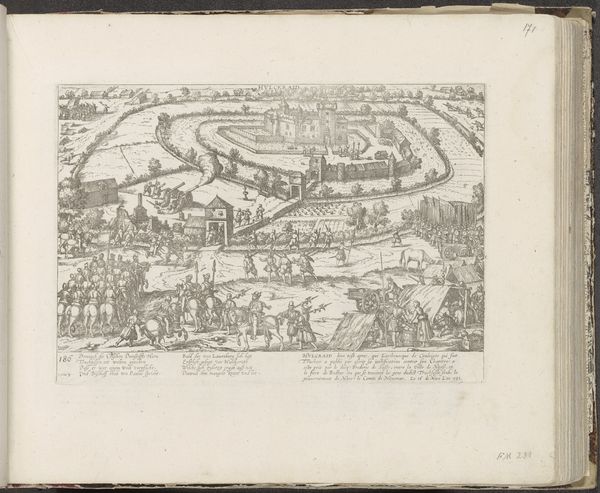
print, engraving
#
baroque
# print
#
landscape
#
engraving
Dimensions: height 223 mm, width 256 mm
Copyright: Rijks Museum: Open Domain
Curator: This is an engraving titled "Gezicht op de vesting Munkács," or "View of Munkács Fortress," dating from approximately 1693-1695. It's currently held at the Rijksmuseum. Editor: Immediately, the overwhelming sense I get is of strategic dominance, you know? This isn’t just a depiction of a fortress, it’s about projecting power— the very shape, perched on that dramatic crag, speaks to invincibility. Curator: Precisely. Consider the period, late 17th century, when territorial disputes and military campaigns shaped the map of Europe. Munkács, in what is now Ukraine, held immense strategic importance. Depicting it this way served not merely to document but to underscore its significance in larger power dynamics. Editor: The fortress, rendered so meticulously, seems like a cage—a fortified microcosm symbolizing control over land and, of course, people. Those little structures nestled at the base—are those the homes of those subjected to its dominion? What does that relationship represent, the oppressor versus the oppressed, visible here? Curator: In many ways, yes. The image presents a very specific, constructed point of view: the fortress dominating the landscape, literally towering over those homes at the base. It’s not merely architectural documentation, but also a declaration of socio-political order. And of course the baroque styling lends a certain flair to the powerful symbolism. Editor: Yes, and even the watery perimeter seems symbolic of both protection and isolation. Are there identifiable symbols or visual metaphors commonly linked to fortresses of this type, and can they provide additional insights into what Munkács meant to those invested in it at the time? It also feels very contained, very ordered...a worldview where everything has its place and nothing enters or leaves without control. Curator: Looking at similar depictions from this period we see a visual rhetoric around invincible fortification to justify particular forms of domination—essentially visually asserting sovereignty over contested lands. The artist renders not only stones and fortifications, but an entire visual argument about power itself. Editor: A perfect encapsulation, then, of its era! Seeing Munkács through the lens of historical forces truly clarifies not only its artistic merit, but the historical intent and lasting relevance of a piece like this. Curator: Indeed. By examining art like this through the forces that shaped its creation and intended effect we find it far more than an image on a page, but a lens through which to interrogate that complex interplay between representation and power itself.
Comments
No comments
Be the first to comment and join the conversation on the ultimate creative platform.
